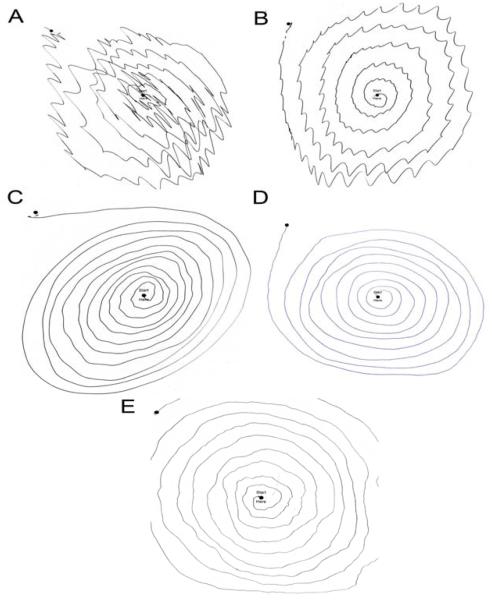Figure 1.
(A-E) Examples of spiral drawings. As previously reported in ET, spirals drawn with the right hand typically have a single identifiable tremor orientation axis (i.e., tremor is most severe at 1 - 2 o’clock and 7 - 8 o’clock), whereas those drawn with the left hand have a single identifiable tremor orientation axis that is 90 degrees to that on the right (i.e., tremor is most severe at 10 - 11 o’clock and 4 - 5 o’clock)[3]. (A) Left hand spiral drawing of an ET patient with severe tremor. The predominant axis is oriented at 10 - 11 o’clock and 4 - 5 o’clock. (B) Right hand spiral drawing of an ET patient with moderate tremor. The predominant axis is oriented at 1 - 2 o’clock and 7 - 8 o’clock. (C) Right hand spiral drawing of an ET patient with mild to moderate tremor. The predominant axis is oriented at 1 - 2 o’clock and 7 - 8 o’clock. (D) Left hand spiral drawing of an ET patient with mild tremor. The predominant axis is oriented at 9 - 11 o’clock and 3 - 4 o’clock. (E) Spiral drawing of a patient with dystonic tremor; tremor is present but no single predominant axis stands out.

